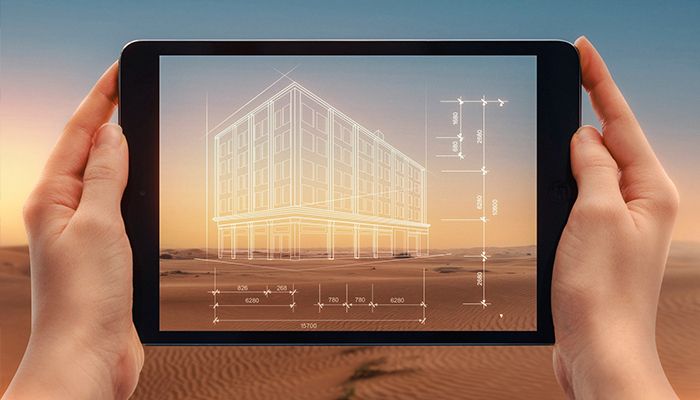The rapid growth in 3D advancement has made businesses explore different digital trends. One of the rising trends among all is the seamless integration of 3D with augmented reality (AR). The focus is to bring about a complete transformation. But what matters is the user experience and its follow-up towards increasing sales. Indeed, augmented reality can become a trend-setter when integrated in the right way.
AR has enhanced the way consumers interact with products and services. Moreover, it has enhanced the experience by enabling consumers to visualize products. While customers generally hesitate to purchase products due to poor representation, AR removes the hurdle. Here, shoppers can seamlessly explore their products and purchase the one that they find suitable.
But it's important to understand the technology behind such 3D integration techniques with augmented reality.
Understanding the best practices for 3D integration

In order to provide a smooth transition of products in the 3D world, it's important to understand what technicalities lie behind them. AR blends digital information with the real world, typically through a user's perspective in real-time. It's important to understand that achieving a seamless and immersive AR experience requires advanced technologies for sensing, processing, and displaying virtual content. Here we divide into:
Depth-sensing technology
Time of flight sensors: ToF measures the time it takes for light or laser pulses to travel to an object and back. The focus on creating depth maps of the real-world environment is on achieving seamless 3D models for digital representation.
Structured light projection: The technique here involves projecting a known pattern onto the scene, where you can analyze how the pattern deforms on a product. For instance, a shoe model can have different deformations; as a result, the system can infer depth information.
Stereo vision: In the 3D integration technique, AR devices can utilize cameras to capture images from different perspectives. These images get processed, which further calculates depth information based on the parallax effect.
Display focus
Waveguides: These days, waveguides use optical components to guide and project virtual images directly into the user’s field. But waveguides can be embedded into the device’s glasses or visors.
Micro-OLED and Micro-LED Displays: In order to provide high-resolution and high-brightness displays, this technology is applied to make virtual objects appear realistic.
3D integration techniques
Stacked die integration: AR devices utilize stacked die integration when combining multiple components into a compact and efficient package. This reduces the footprint and power consumption of the device.
Heterogeneous integration: The best practice for 3D integration often involves various sensors, processors, and memory components from different manufacturers. It ensures these components work seamlessly together by optimizing data transfer and communication.
Monolithic integration: It involves integrating multiple functions or components. This technique can lead to improved power efficiency and reduced latency in AR processing.
Sensor fusion
AR systems use sensor fusion algorithms to combine data from multiple sensors, such as cameras, accelerometers, gyroscopes, and magnetometers. This helps improve the accuracy of tracking and positioning virtual objects in the real world. The process is highly applicable for e-commerce companies that focus on retail products.
These were the technical aspects of achieving seamless 3D models for the virtual world. However, customers need to be satisfied with both products and services, and nothing can be better than understanding how product representation can build business.
SLAM Technology
SLAM (Simultaneous Localization and Mapping) enables digital content to accurately place the real world. With the combination of sensors and computer vision, the technology can seamlessly track the user’s movement, producing clarity of the surroundings. This process helps ensure the smooth evaluation of 3D models in the real world.
AR can generate true value for your business, and here’s how you can turn the tables:
Customer engagement
The core of revenue growth lies in smooth customer engagement. Your brand should gain the trust of your customers, and only with quality product representation can you make a move. Integrating 3D models in a 2D environment allows your brand to connect with and engage consumers; as a result, it helps build loyalty.
Incorporate AR into business

The introduction of 3D models digitally enables consumers to visualize your product in the real world.
Creating an interactive and engaging campaign with AR technology provides additional information for businesses.
Seamless integration of 3D in apps and websites can provide more options for consumers. For instance, virtual try on products for clothing, eyewear, and other accessories are booming these days.
The technology allows for interactive and immersive training experiences where simulations of real-world scenarios can be conducted.
How is AR thriving?
AR comes with significant potential. From entertainment and gaming to education and training, seamless 3D integration is already being utilized by different industries.
Retail
Retail e-commerce businesses need to find creative ways to promote their products. With the right integration of products, you can always create an exceptional shopping experience. Augmented reality is widely being used in the retail industry to provide an exclusive customer experience.
Entertainment
One of the latest technologies that has enthralled the audience base is the introduction of AR in the world of entertainment. With seamless 3D integration, it has helped to project images and information. This provides viewers with an immersive experience. Moreover, it can be used to create games and other interactive content.
Where does the future lie?

The world of 3D is still in the developmental phase. But we can expect AR to rise in the upcoming years. Moreover, as the technology develops, it will be more interactive, with a complete focus on higher-resolution and real-time information, providing a realistic and immersive experience.
Conclusion
Seamless 3D integration of augmented reality (AR) offers a multitude of opportunities for brands to thrive in today's highly competitive digital landscape. The convergence of advanced technologies and immersive experiences through AR can significantly impact a brand's success.
The seamless 3D integration of AR provides a powerful tool for deeper customer engagement. Businesses that embrace the right technology not only enhance the customer experience but also provide an immersive experience.






